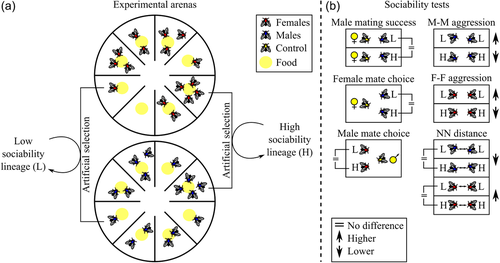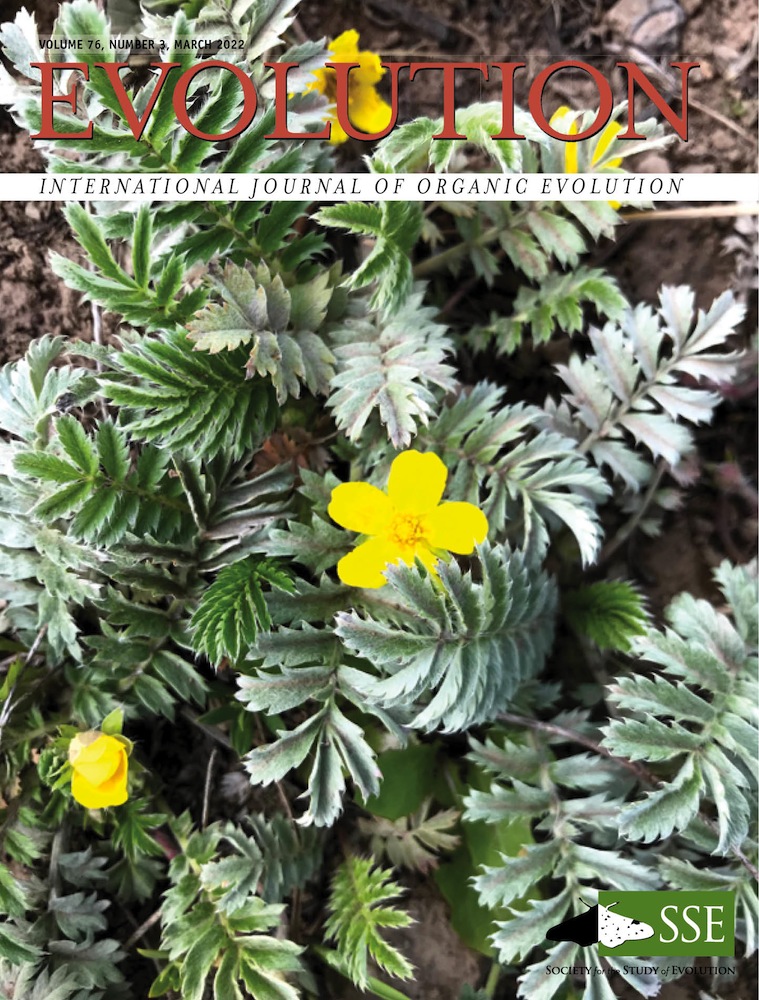Digest: The evolution of social behavior and its effect on aggressiveness and reproduction
This article corresponds to Scott, A. M., I. Dworkin, R. Dukas. 2021. Evolution of sociability by artificial selection. Evolution. https://doi.org/10.1111/evo.14370.
Abstract
Social behavior is observed in a wide range of species, and its potential benefits include protection from predators, enhanced feeding, and reproductive opportunities. Experimental approaches using artificial selection on sociability can answer fundamental questions about the evolution of social behavior, such as: Can sociability evolve by artificial selection? Is aggressiveness associated with sociability levels? Does sociability increase reproductive success? Scott et al. attempt to answer those questions using the fruit fly as a model species.
Sociability is a population trait in which individuals engage in conspecific interactions and cooperation. It is a complex trait that can be observed at different levels in a wide range of species (e.g., insects and primates). There are many possible explanations for the evolution of social behavior (Alexander 1974) and different mechanisms have been explored both empirically (e.g., Weitekamp et al. 2017) and theoretically (e.g., Hamilton 1964).
Recently, Scott et al. (2021) used artificial selection on the behavior of fruit flies (Drosophila melanogaster) to explore the evolution of sociability and its effect on reproductive traits. Using an experimental approach, they artificially selected individuals (females and males, separately) that showed low and high social behavior based on the size of the groups they formed during feeding (Fig. 1A). Individuals from the same selection treatment were allowed to reproduce and their offspring were exposed to the same experimental procedures. After 25 generations under artificial selection, individuals from low- and high-sociability lineages were tested for quantitative behavioral differences in mating, aggressiveness, and social distancing (Fig. 1B).

First, these experiments on D. melanogaster showed that sociability is, at least partially, genetically determined (Scott et al. 2021). After several generations under selection, low- and high-sociability lineages evolved diverging sociability scores, with males showing a stronger response to selection than females. However, sociability scores of high-sociability lineages did not strongly diverge from the scores of the initial wild population, which suggests that the evolution of social behavior is genetically limited and that sociability in wild populations of D. melanogaster might be limited by the population's current genetic variation.
Second, traits that are linked to sociability evolved as expected. Individuals (both males and females) from low-sociability lineages showed stronger aggressive behavior toward individuals of the same sex than did individuals from high-sociability lineages (Fig. 1B). An interesting observation was that nearest-neighbor distance did not increase in low-sociability lineages, which means that nearest-neighbor distance is not an effective indicator of sociability or hostility toward conspecific individuals.
However, from an evolutionary perspective, the most surprising result was the absence of differences in mating success and mate choice between low- and high-sociability lineages. One of the most important assumptions used in theoretical studies (e.g., Sutcliffe et al. 2016) on the evolution of social behavior is that sociability provides fitness benefits (increased survival and/or reproduction) to the individuals that form social groups, but Scott et al. (2021) showed that reproductive success does not necessarily increase when social behavior increases. This conclusion, however, might be limited to the experimental conditions used in their study and may not apply to other reproductive traits, such as the amount of energy used in searching for mating partners, or survival probability in nature.
There are many hypotheses for the evolution of social behavior. One idea is that social behavior evolved because ancestral nonsocial neutral aggregates worked as cues for the quality or quantity of the resource being shared (e.g., food quality, mating opportunity, defense against predators). Such aggregates might have served as a basis for the subsequent evolution of social traits. This hypothesis, however, needs exploration from both theoretical and empirical approaches.
LITERATURE CITED
Associate Editor: D. Filatov
Handling Editor: T. Chapman
SUBMIT A DIGEST
Digests are short (∼500 word), news articles about selected original research included in the journal, written by students or postdocs. These digests are published online and linked to their corresponding original research articles. For instructions on Digests preparation and submission, please visit the following link: https://sites.duke.edu/evodigests/.




